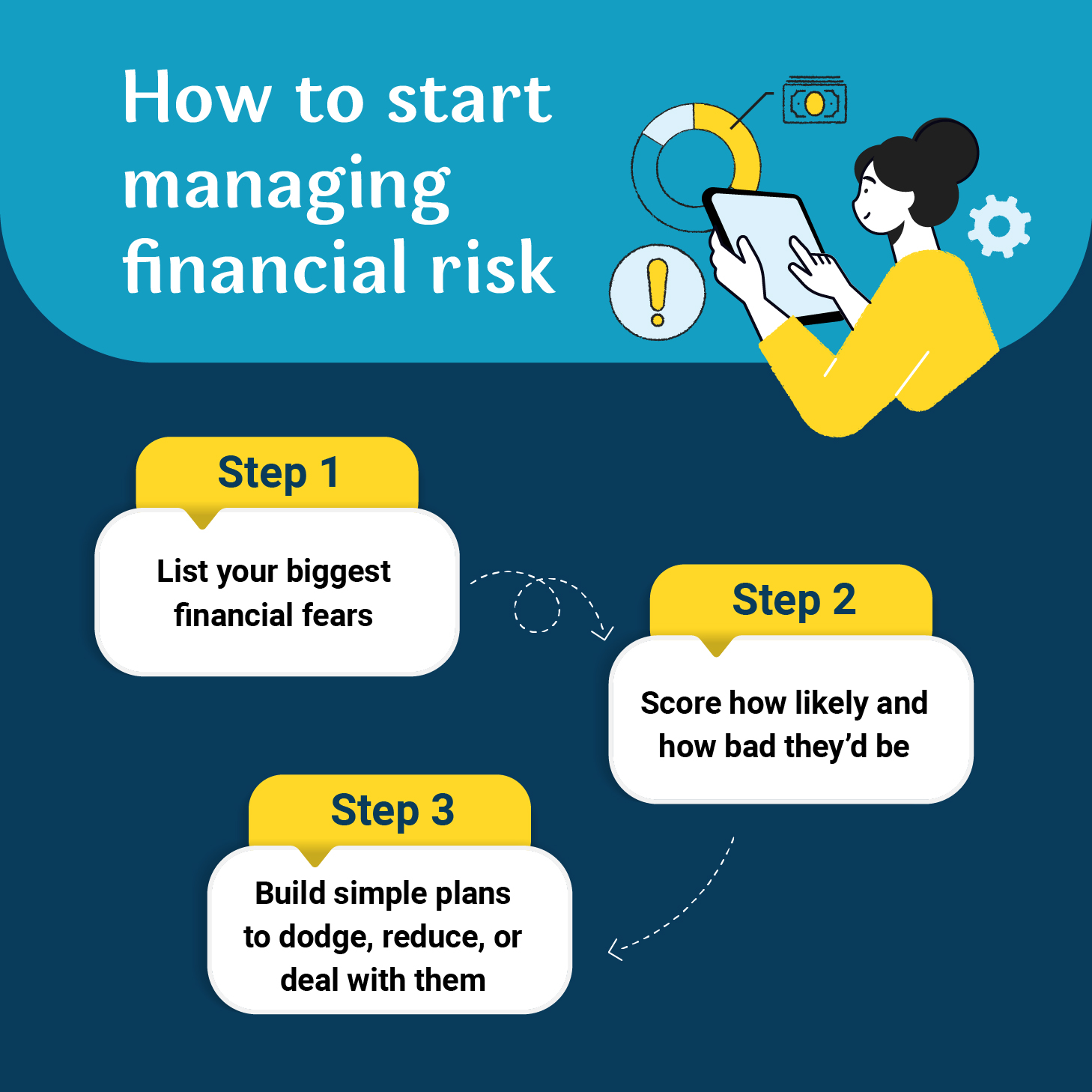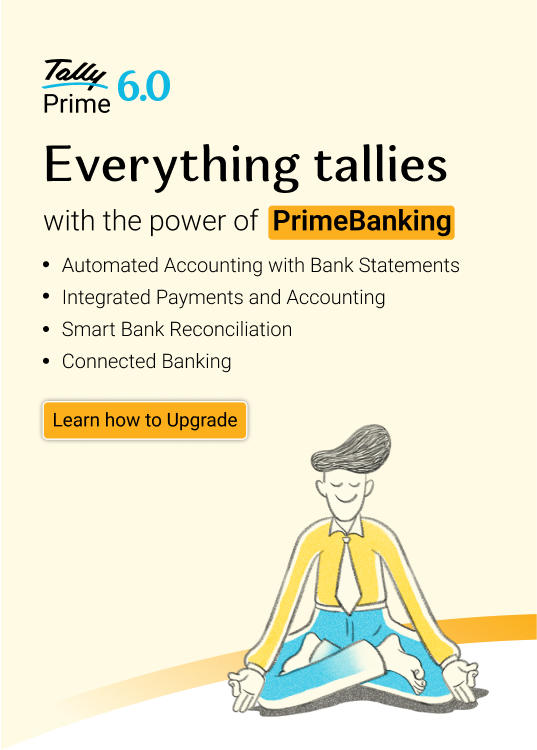Running a small business is thrilling—but let’s face it, the road isn’t always smooth. One month you’re riding high, and the next, you’re wondering how to cover salaries because a big client delayed payment or an unexpected bill came knocking. That’s where financial risk management steps in.
Think of it as your business umbrella during India’s unpredictable monsoon: you might not always need it, but when the storm hits—you’ll be glad it’s there.
In this blog, we’ll break down financial risk management in simple, relatable terms and show you how small businesses across India can use it to bounce back from financial hiccups with confidence.
What is financial risk management?
Imagine your business is a boat sailing through the market. Most days are smooth, but once in a while, a big wave hits, like a late payment from a client, a sudden hike in raw material costs, or your website crashing during a sale. Financial risk management is what helps you stay afloat during those waves.
It’s all about figuring out money-related problems before they hit and having a plan to deal with them calmly and not in panic mode. Think of it as a life jacket, an emergency kit, and a GPS all rolled into one.
Here are a few types of risks that might show up at your business’s doorstep:
- Market risk – When the prices of goods or demand for services suddenly change.
- Credit risk – When someone doesn’t pay you on time or at all.
- Operational risk – When everyday systems like payments or deliveries fail.
- Compliance risk – When you miss tax deadlines or legal rules.
You don’t need to be an expert to manage these risks, just knowing where the problem might be and preparing for them can make all the difference. It's like carrying an umbrella, not because it’s raining right now, but because you know it might.
Your startup-friendly toolkit: 4 effective financial risk management strategies
Financial risk management doesn’t have to be boring or complicated. You don’t need a finance degree or a team of analysts to protect your small business. All you need is a set of simple strategies that work. Think of it like your business’s first-aid kit.
Let’s check out some practical strategies that work for small teams:
Set up your financial safety net
Running a business without backup is like driving without a spare tire. Everything’s fine until it’s not. That’s why it’s super important to have a small emergency fund. This fund is your financial cushion as it helps you cover salaries, rent, or bills even when sales slow down or a client delays payment. You don’t have to start big. Even saving a little each month adds up over time.
|
Pro tip: Open a separate bank account and aim to save enough to cover 3–6 months of essential expenses. Treat it like it doesn’t exist and only touch it when it really needs to. |
Don’t put all your eggs in one basket
Let’s say you have one big client who gives you 80% of your revenue. Everything’s great until they decide to pause the contract or delay payments. Now what? That’s why it’s smart to diversify. Offer a second product. Approach new customer groups. Explore small side streams of income like consulting, workshops, or subscriptions. This way, even if one stream slows down, your business still flows. It’s like having multiple taps instead of just one and if one dries up, you’ve still got water.
Check before you trust
We all want to believe our clients and vendors are reliable. However, in business, it’s better to verify before you rely. Before giving credit terms or signing long contracts, take a few minutes to check:
- How they’ve paid in the past
- What does their industry look like
- Whether they’ve had issues with other businesses
You can create a simple client risk scoring sheet where you can rate potential clients based on things like payment history and financial health. It helps you spot red flags early and make smarter calls. It’s not being suspicious, it’s just good business sense.
Have a plan for “what if” moments
What if your monthly revenue suddenly drops by 30%? or your biggest supplier hikes prices overnight? Scary stuff but way less scary if you already have a plan. A cash flow contingency plan is like a cheat sheet for tough times. It tells you:
- Which costs you can cut without hurting the business
- Which areas need to be protected (like paying your team)
- How you can boost cash flow quickly (maybe offer a flash sale or push for faster payments)
You don’t need expensive software to make this. Just open a Google Sheet, write down your ideas, and update it every now and then. You’ll be surprised how prepared you feel after doing this once.
The real-world game plan: How to start managing risk today
Alright, now that you’ve got your toolkit ready, it’s time to get to work. The good news? You don’t have to wait for something big to happen to start managing risk. The earlier you begin, the more prepared you’ll be when things don’t go as planned.
Here’s your step-by-step game plan to start managing financial risks today:

Step 1: List your biggest financial fears
Every business owner has a few financial nightmares. Maybe you’re worried about clients not paying, unexpected costs, or your sales declining. It’s important to recognise these fears because the first step to managing risk is knowing what might go wrong.
Make a list of the things that scare you the most about your business’s money flow. A few examples could be:
- A client refusing to pay their invoice on time.
- A sudden rise in material costs.
- A cash flow shortage if sales don’t pick up.
Don’t hesitate just write it all down! The more specific you are, the better prepared you’ll be.
Step 2: Score how likely and how bad they’d be
Now that you have your list of fears, it’s time to rate them. Don’t worry, we’re not talking about complex calculations here. Keep it simple.
Think about each risk and ask yourself:
- How likely is this to happen? (1 = Very unlikely, 5 = Very likely)
- How bad would the impact be if it did? (1 = Small impact, 5 = Huge impact)
For example:
- Late client payments: Likely (4), Bad impact (4)
- Unexpected cost increase in materials: Unlikely (2), Medium impact (3)
This simple scoring system helps you focus on the risks that matter most and need your attention first.
Step 3: Build simple plans to dodge, reduce, or deal with them
Once you’ve got your risks listed and rated, it’s time to create a plan. This doesn’t have to be a huge, complicated document. It could be as simple as a few notes on how to dodge, reduce, or deal with each risk. For example:
- Late client payments: Set up clear payment terms and send reminders early. Maybe even offer small discounts for early payments.
- Unexpected costs: Build your emergency fund and review contracts to lock in prices.
- Cash flow shortage: Create a backup plan, like cutting non-essential costs or running a special promotion to boost sales.
The goal is to have a quick response ready for each risk. Don’t try to solve everything at once, just focus on a couple of actions that will make a real difference.
Risk in action: Real SMEs who turned the tide
Let’s look at how some small businesses faced financial challenges and found ways to manage financial risk successfully.
Case 1: Scrums.com – Staying on track with better sales management
Scrums.com, a growing tech platform, needed better control over their sales and revenue. They used automation to track sales and better forecast their earnings. This helped them make smarter decisions and avoid financial surprises which is super important when your business is growing fast.
Case 2: Razorpay – Spreading the risk by diversifying
Razorpay started out offering only payment services but realised relying on just one source of income was risky. So, they expanded into new areas like payroll and lending services. By doing this, they spread out their income sources, which helped them stay strong even when investment slowed down.
What can we learn from them?
Managing financial risk means thinking ahead and not putting all your eggs in one basket. It’s about having backup plans and being ready for unexpected changes.
Every business faces tough times. However, with a little planning, you can stay calm and handle anything that comes your way. That’s what financial risk management is all about, being ready, not worried. Start small. Make a list, create a simple plan, and take one step at a time.










